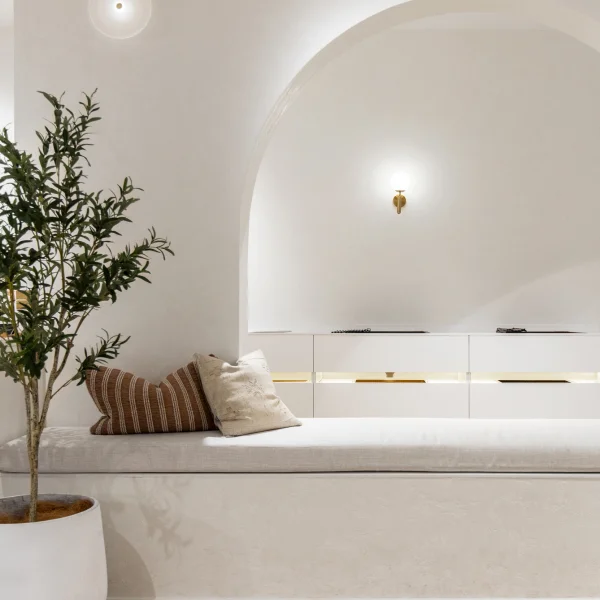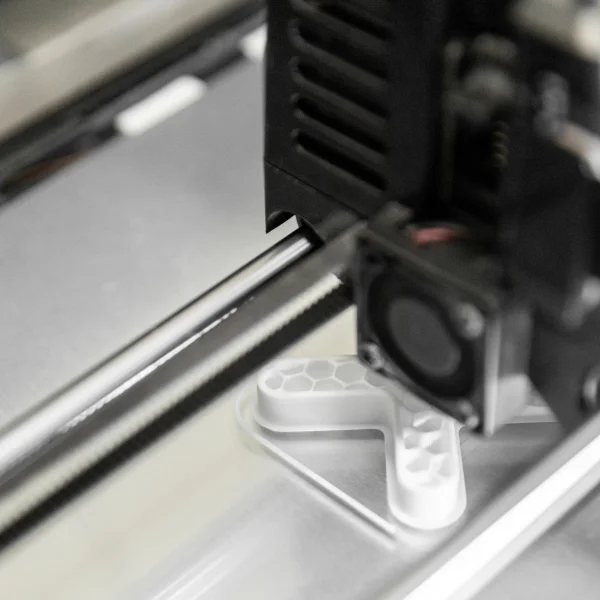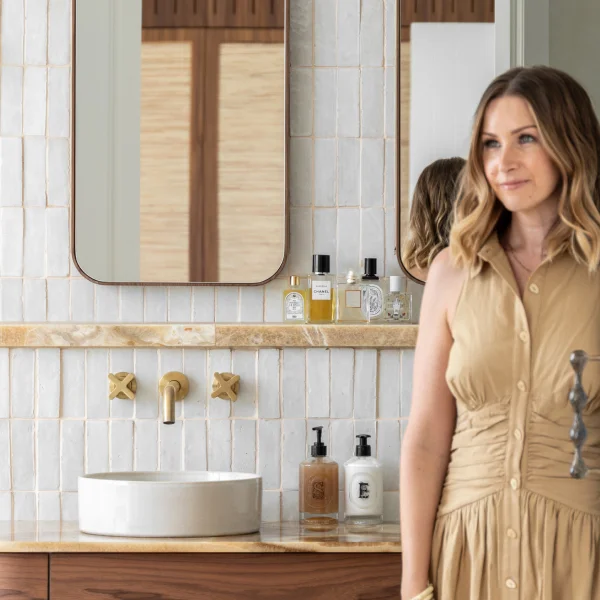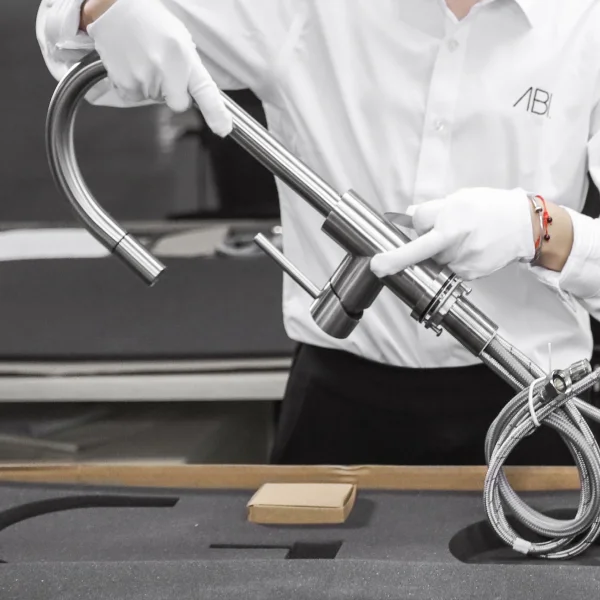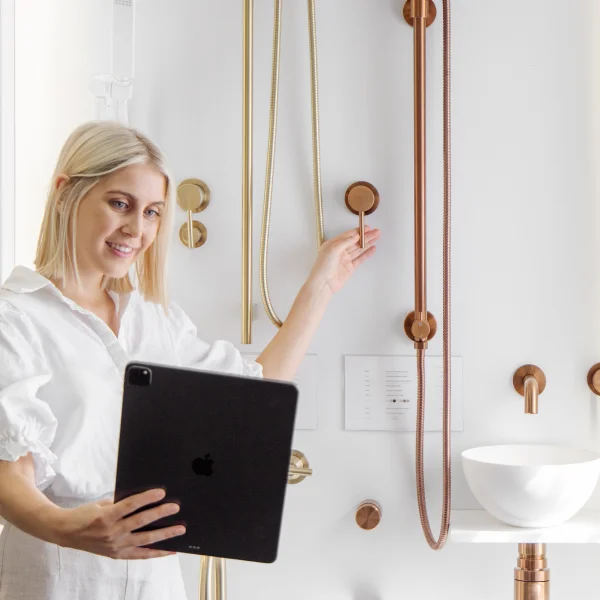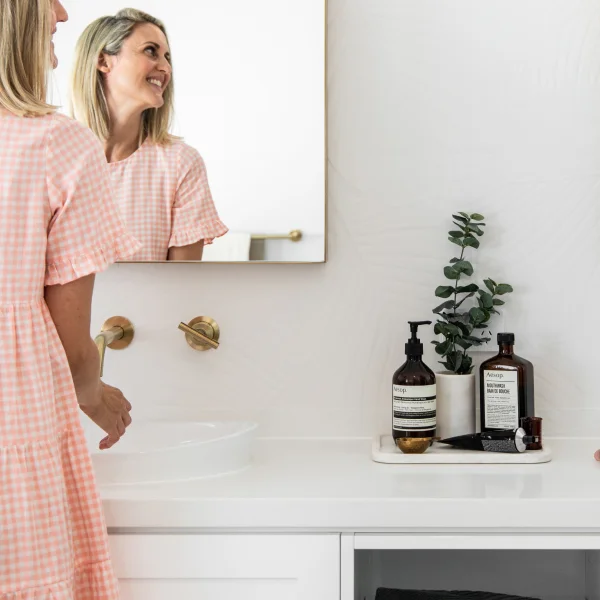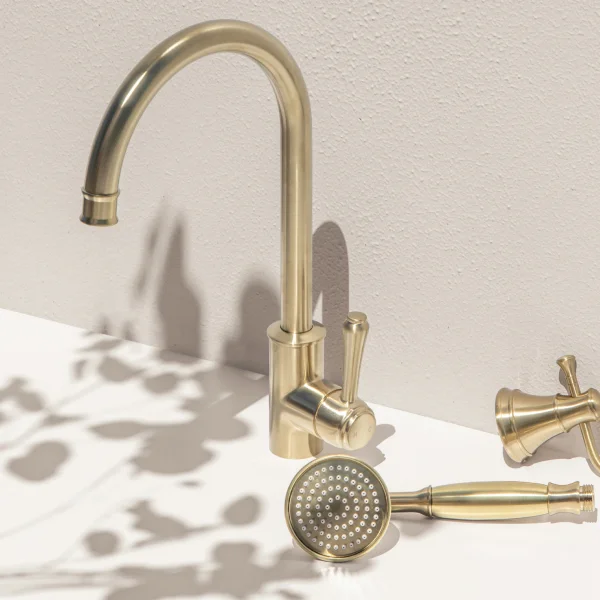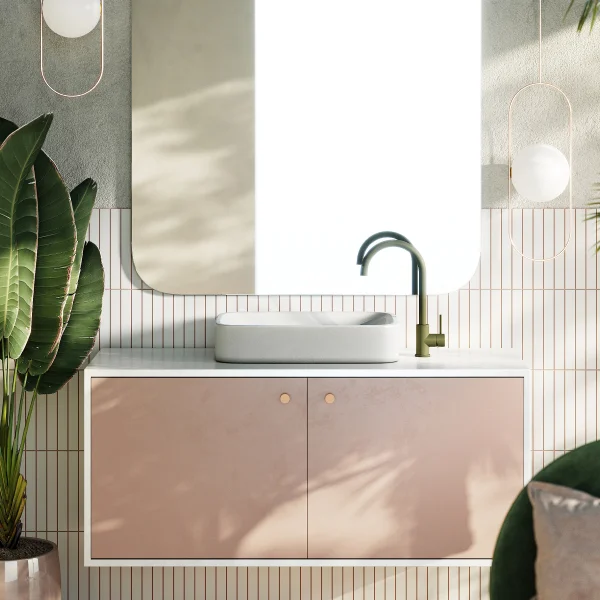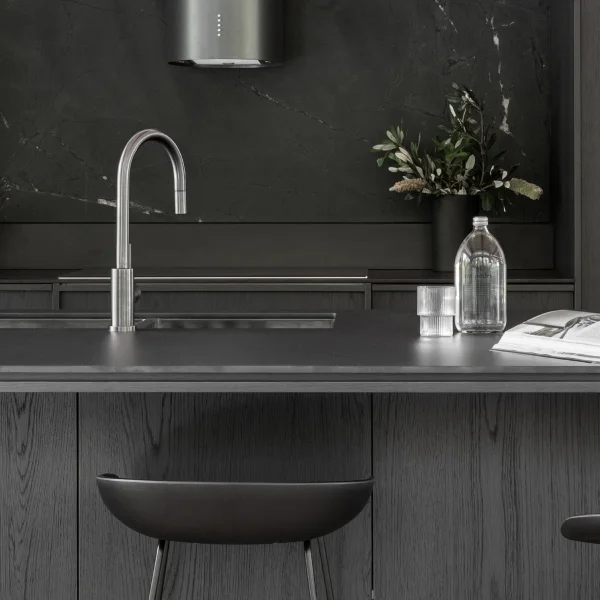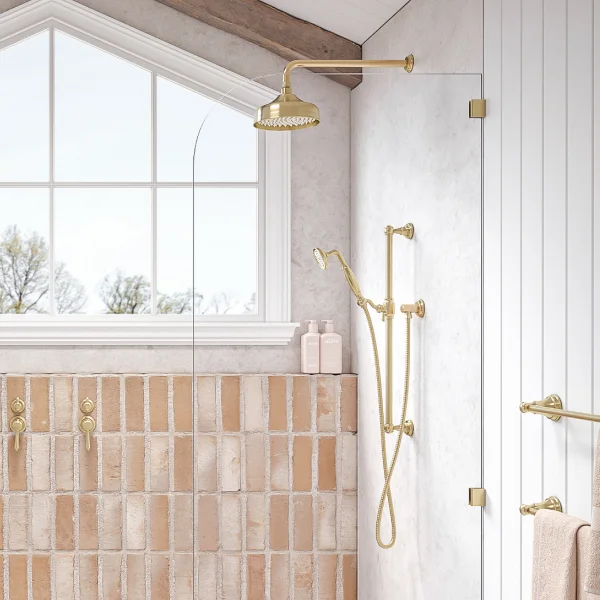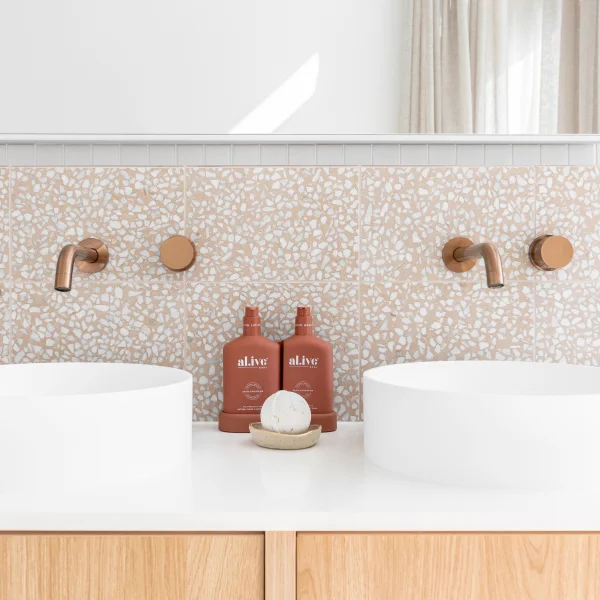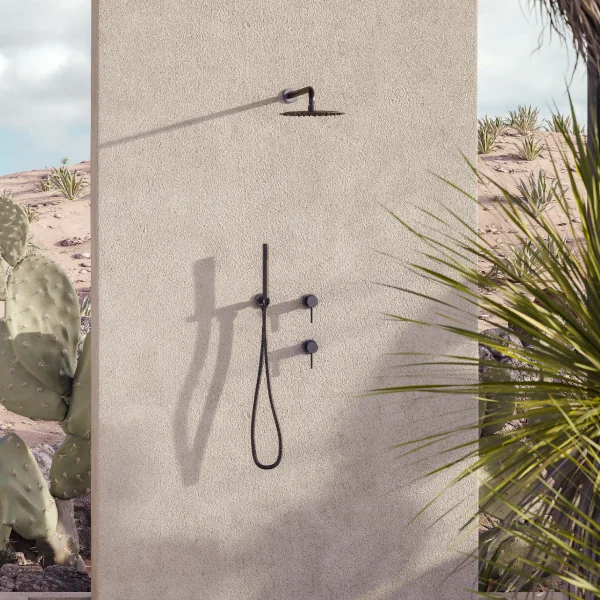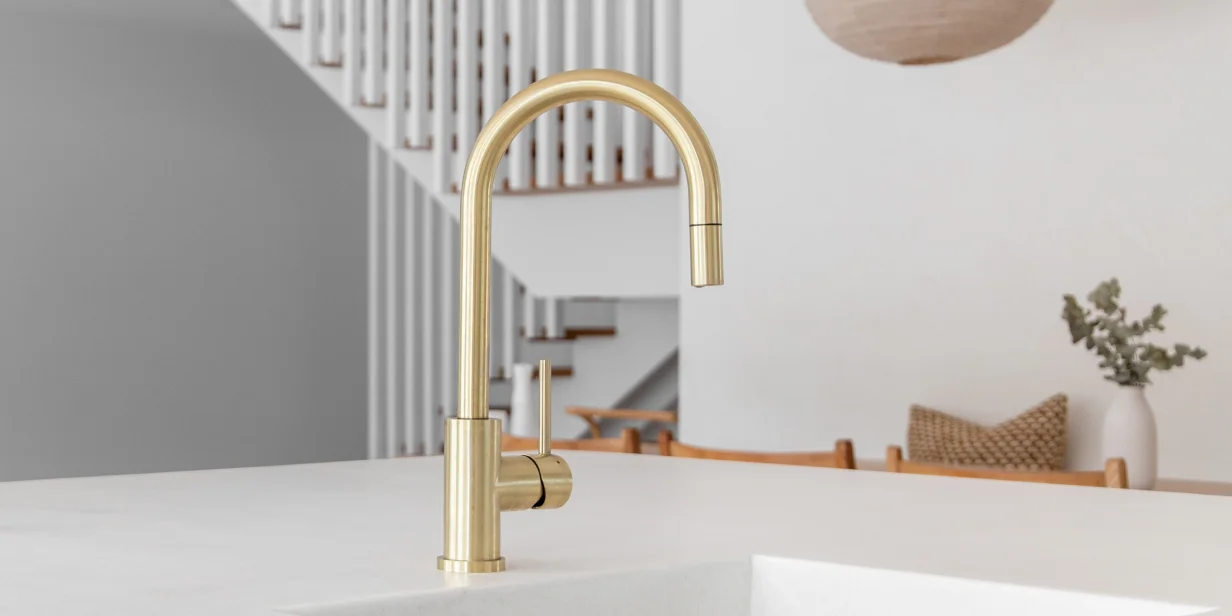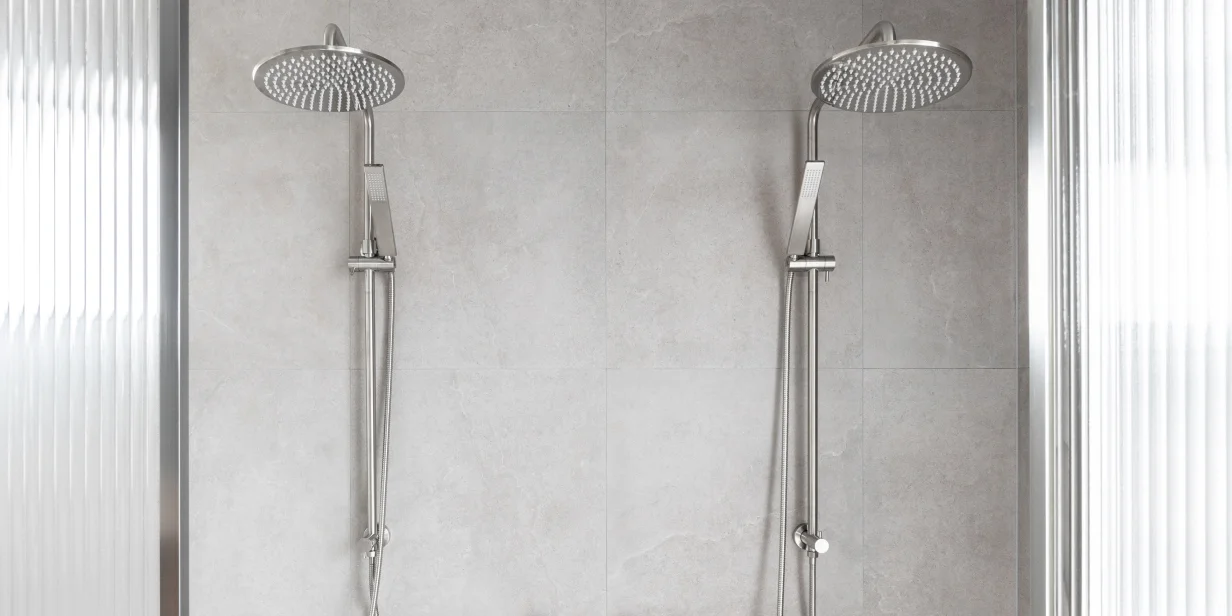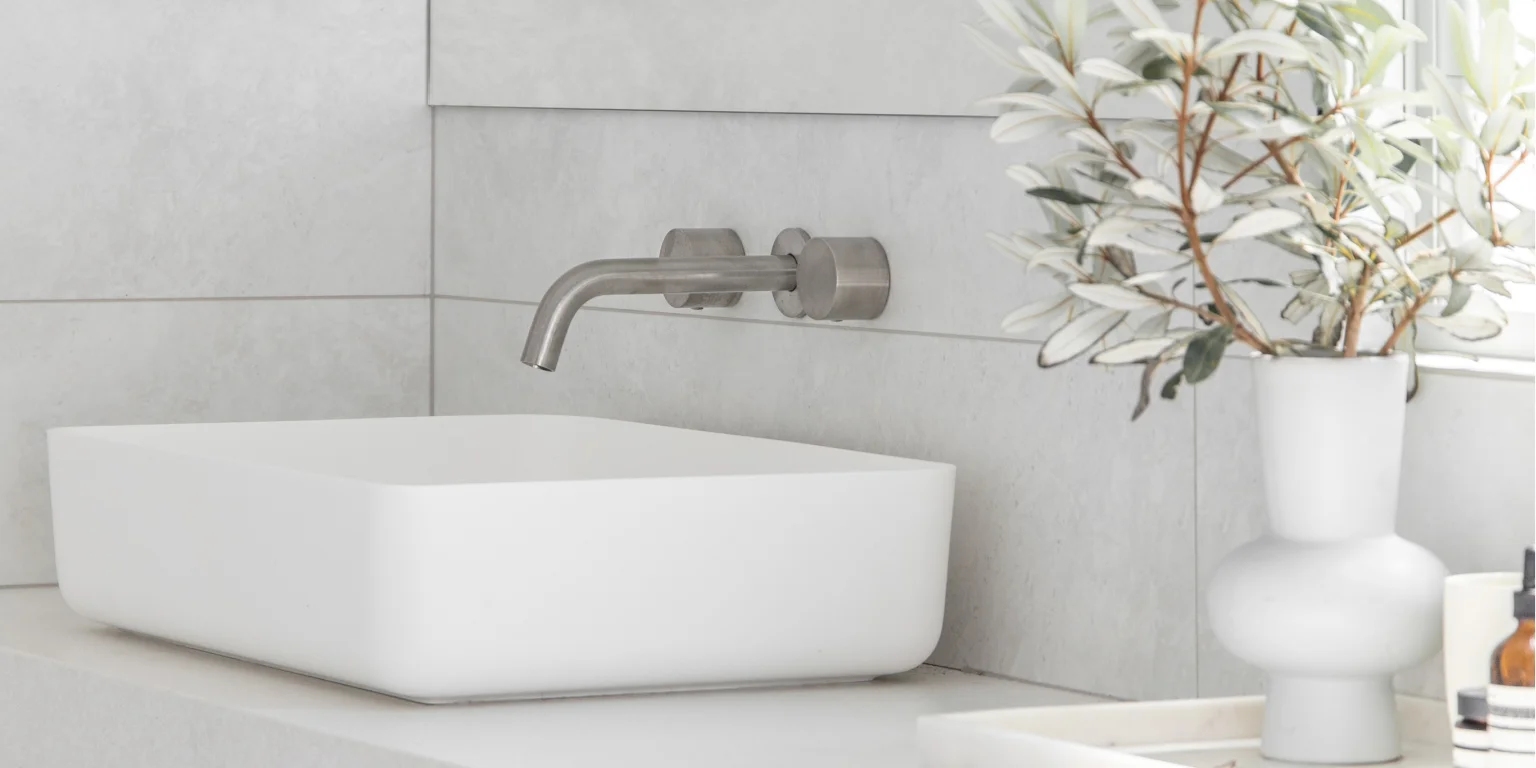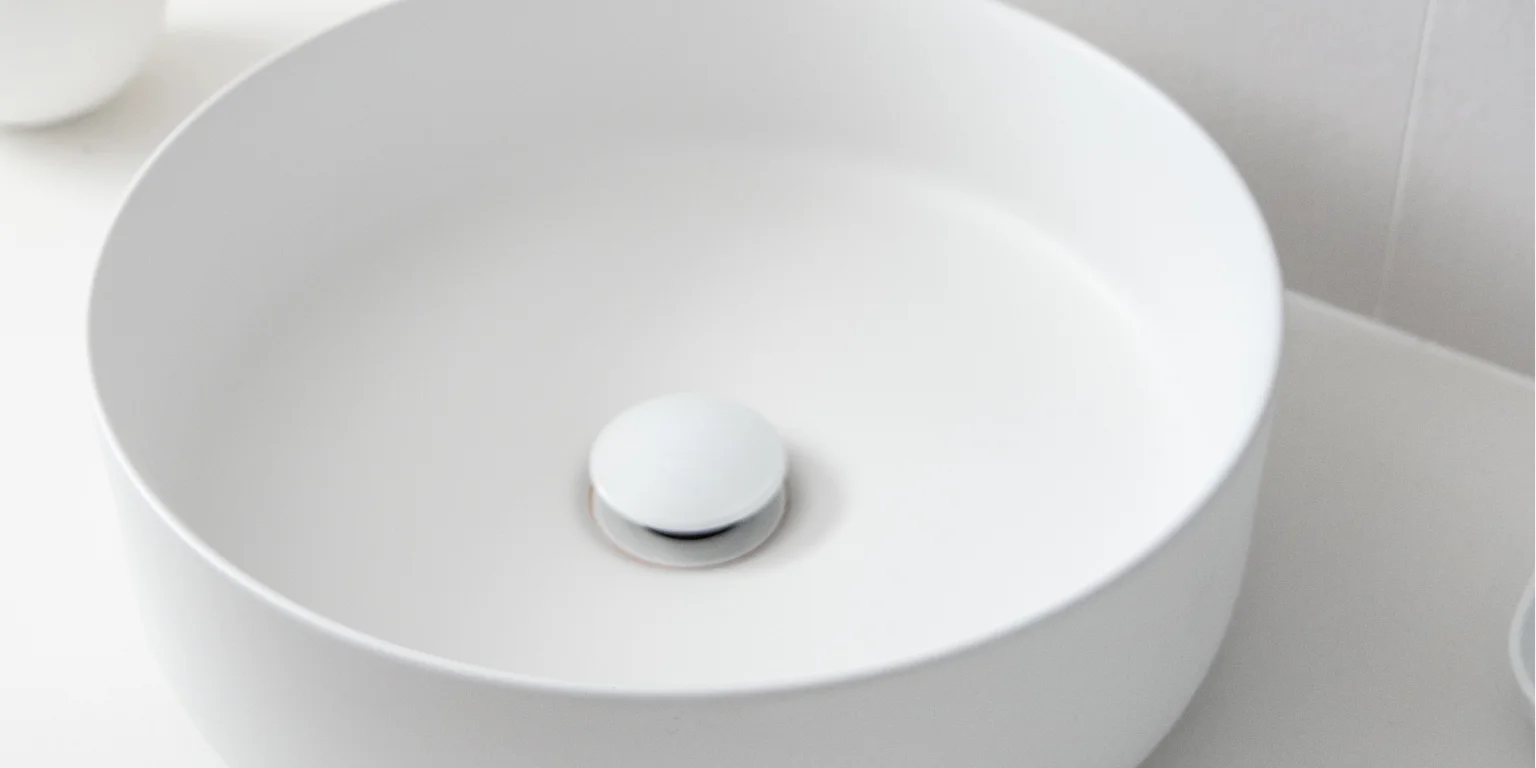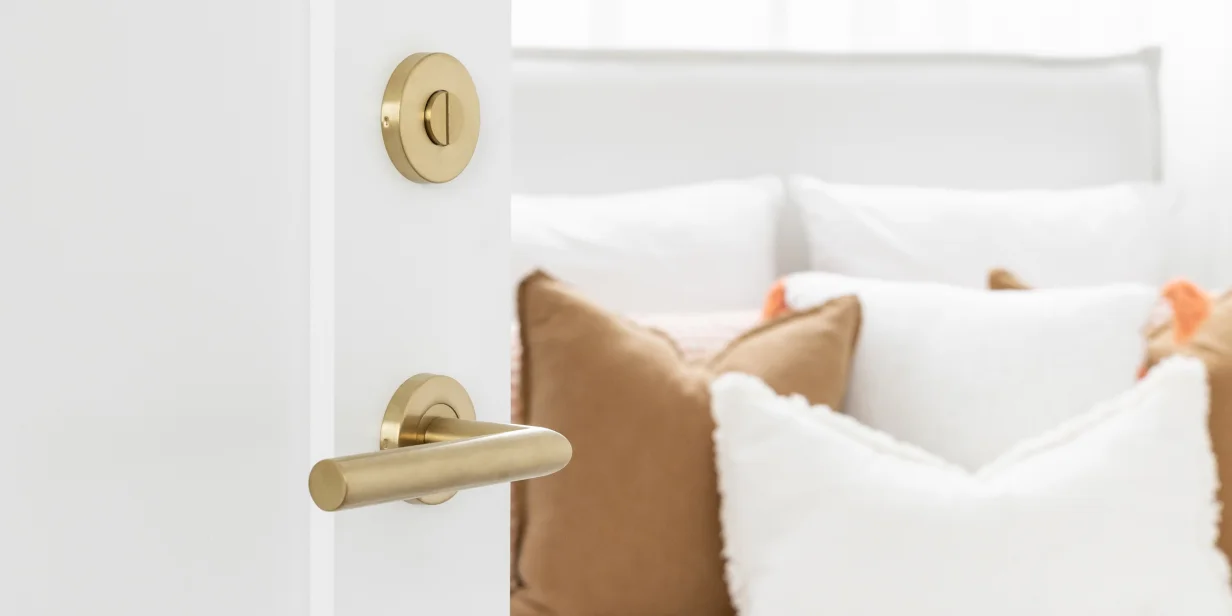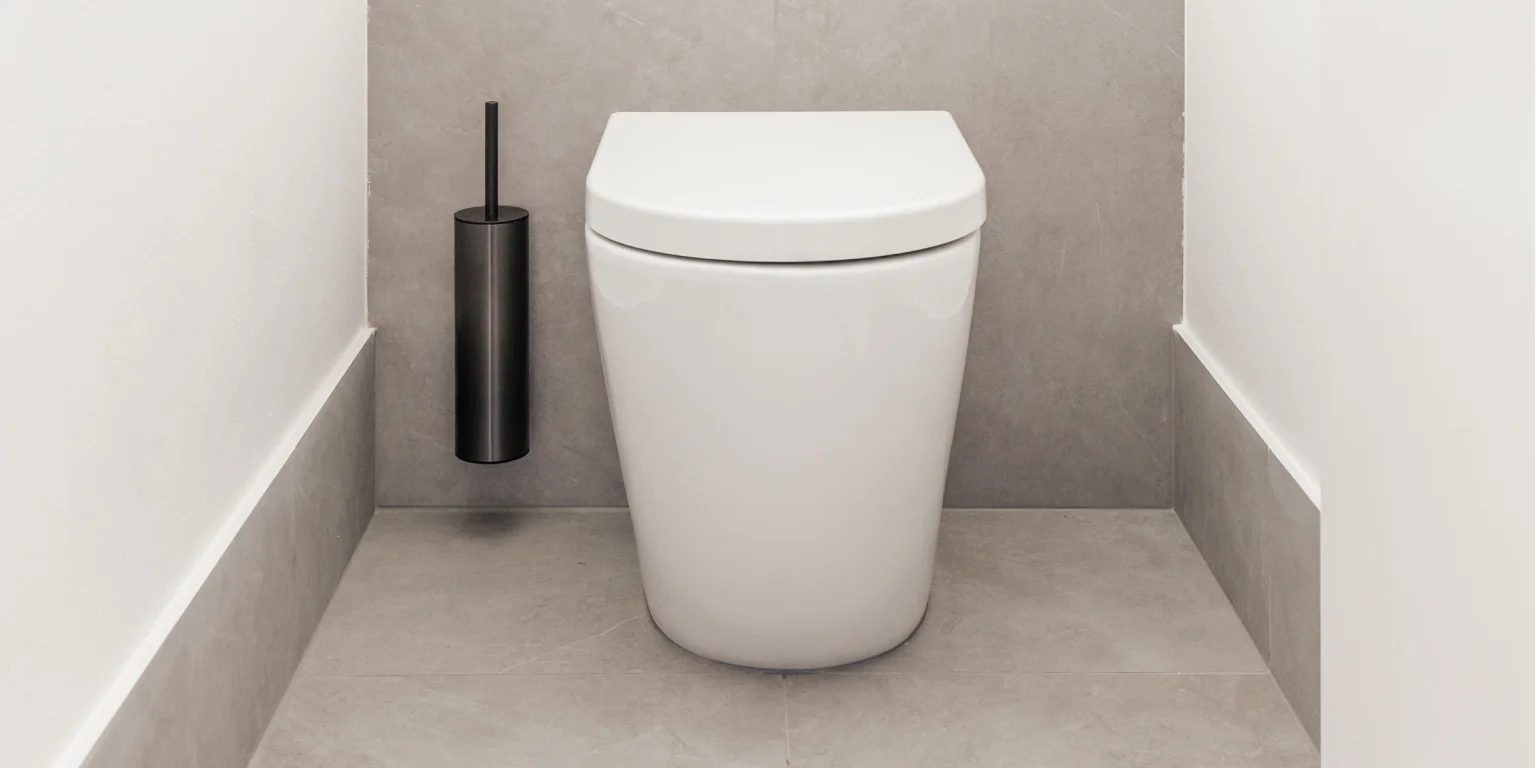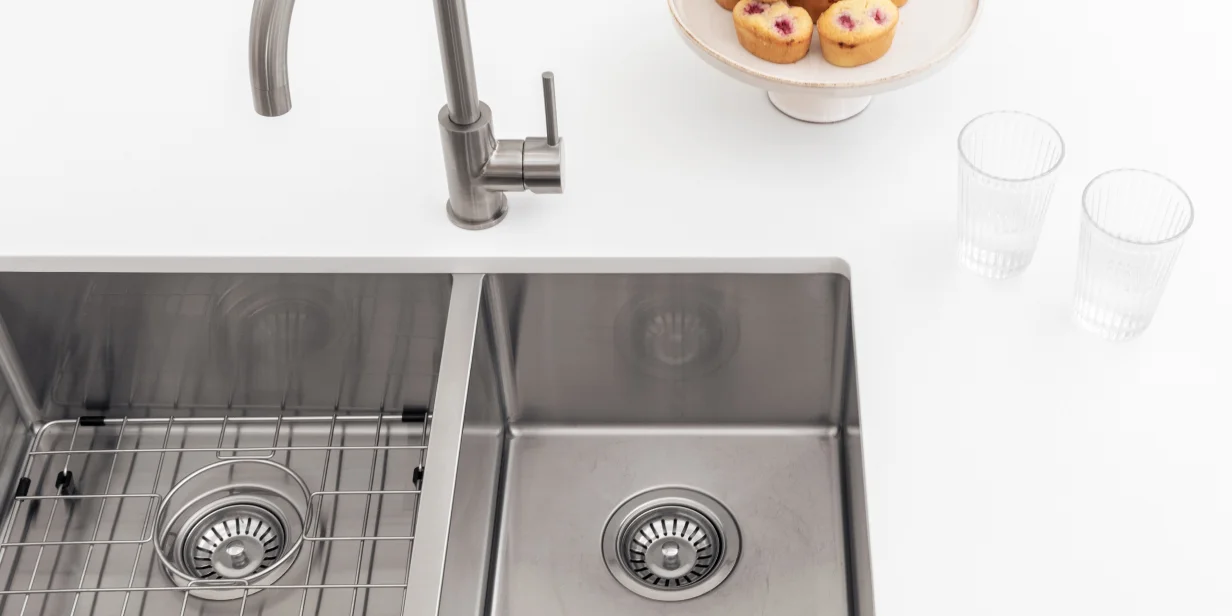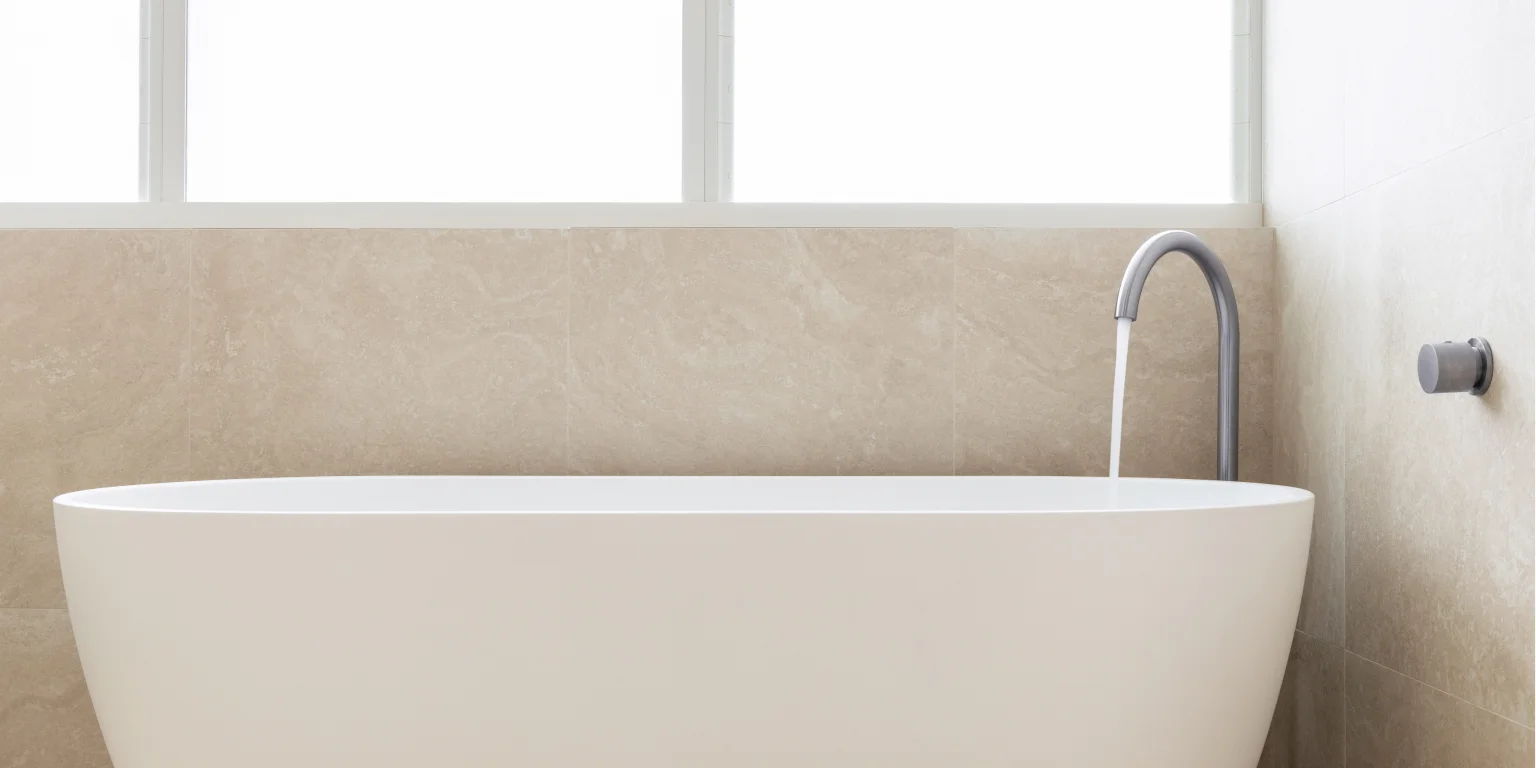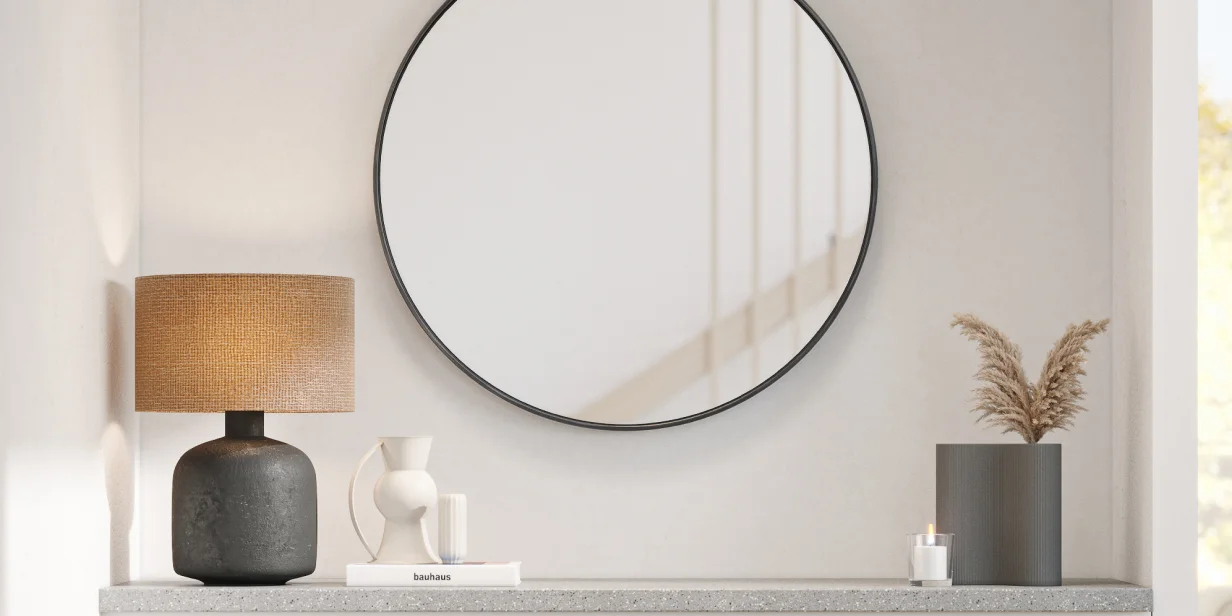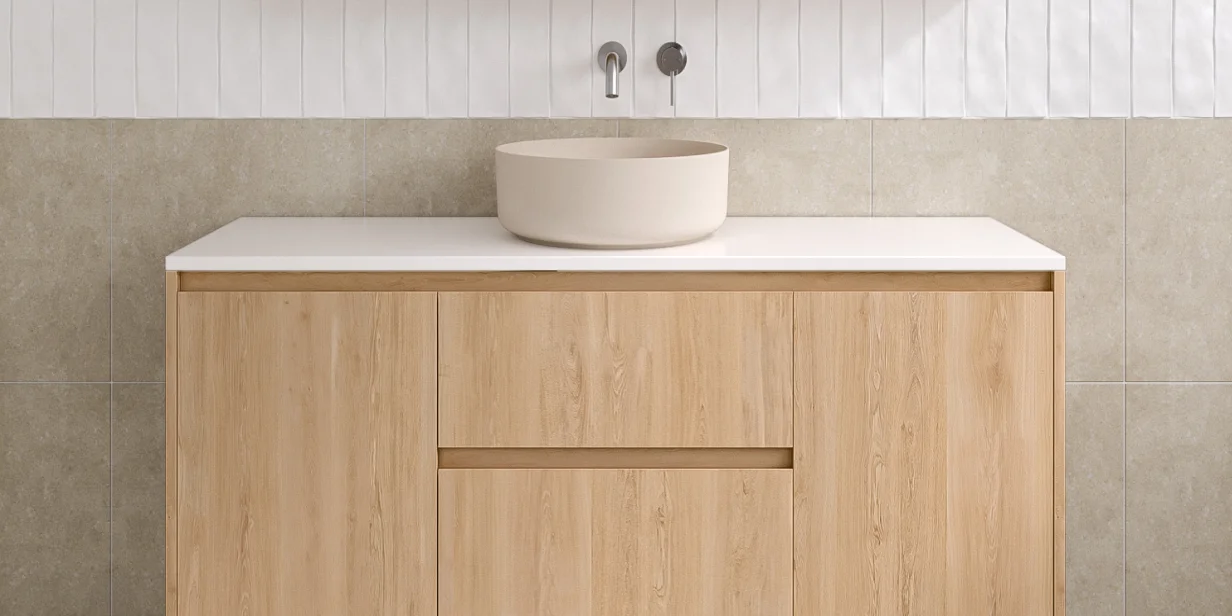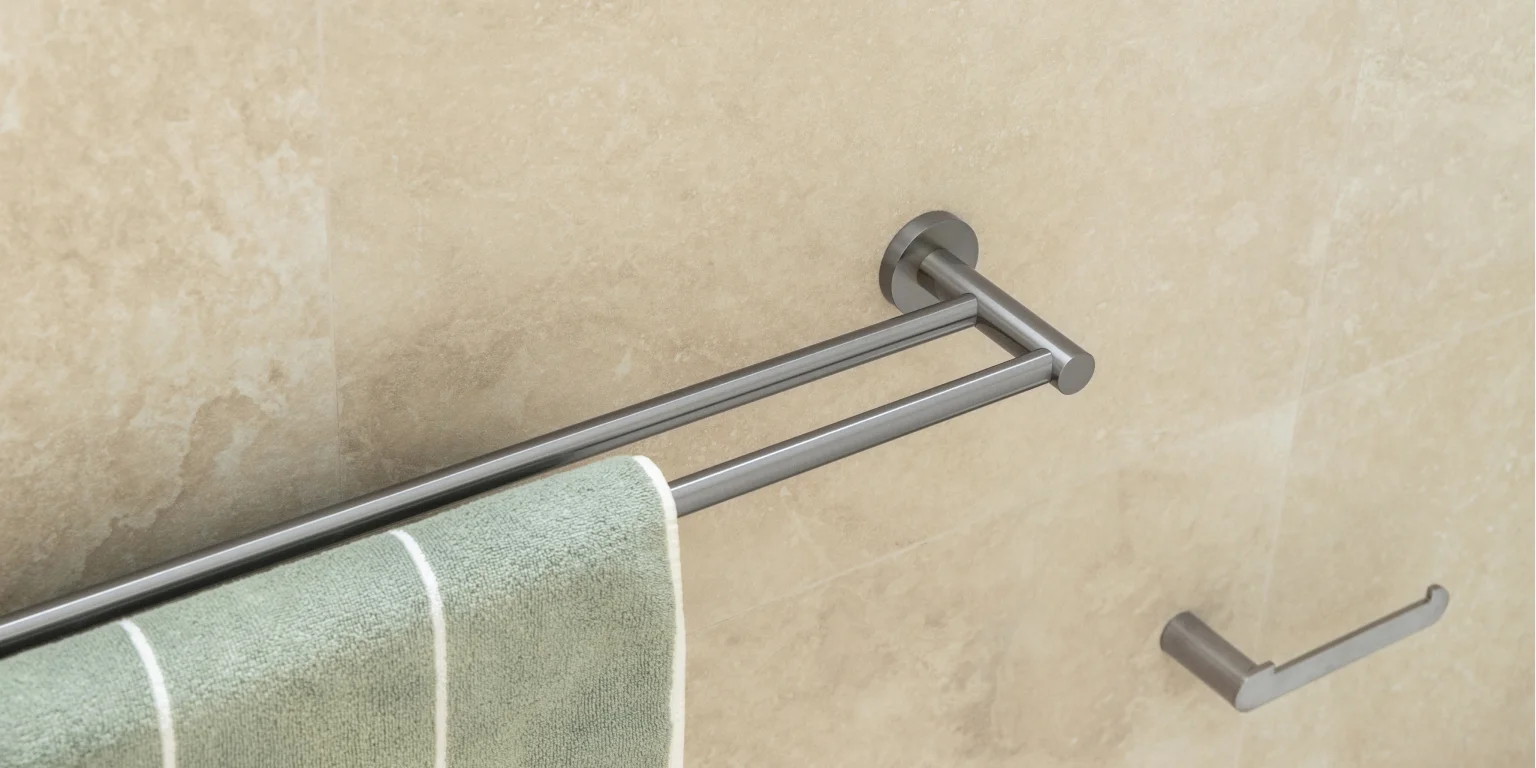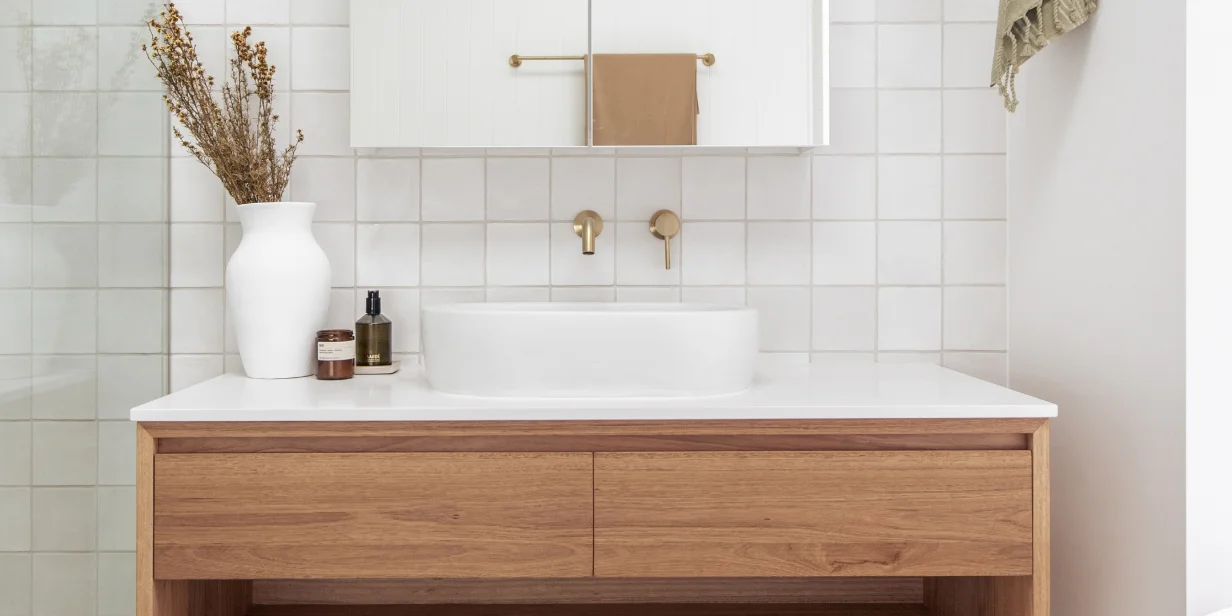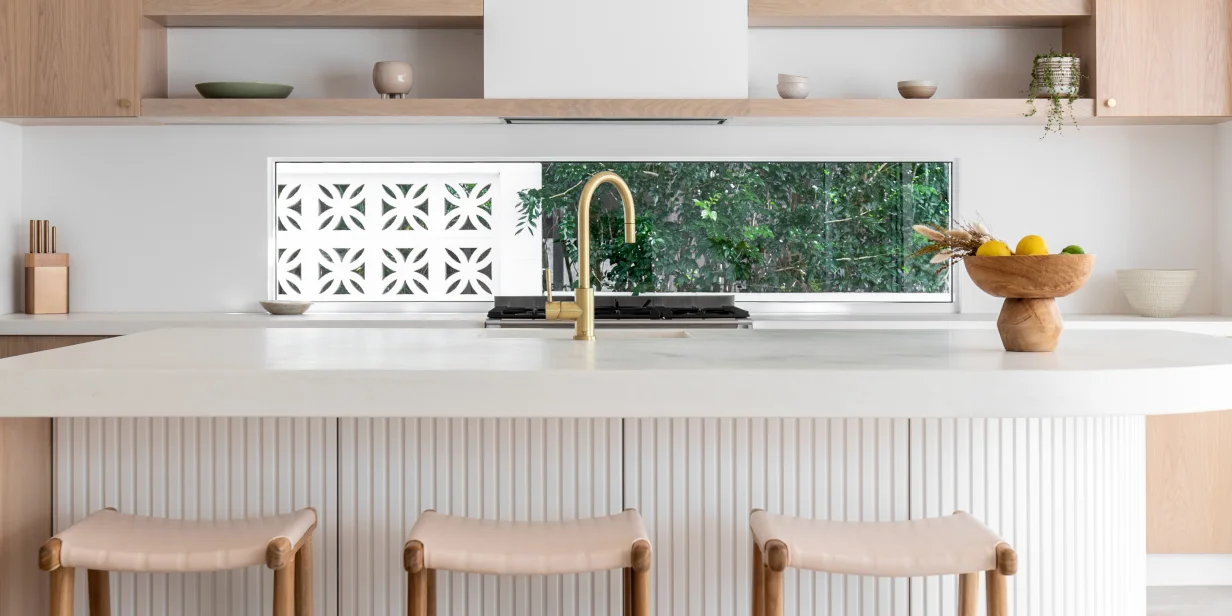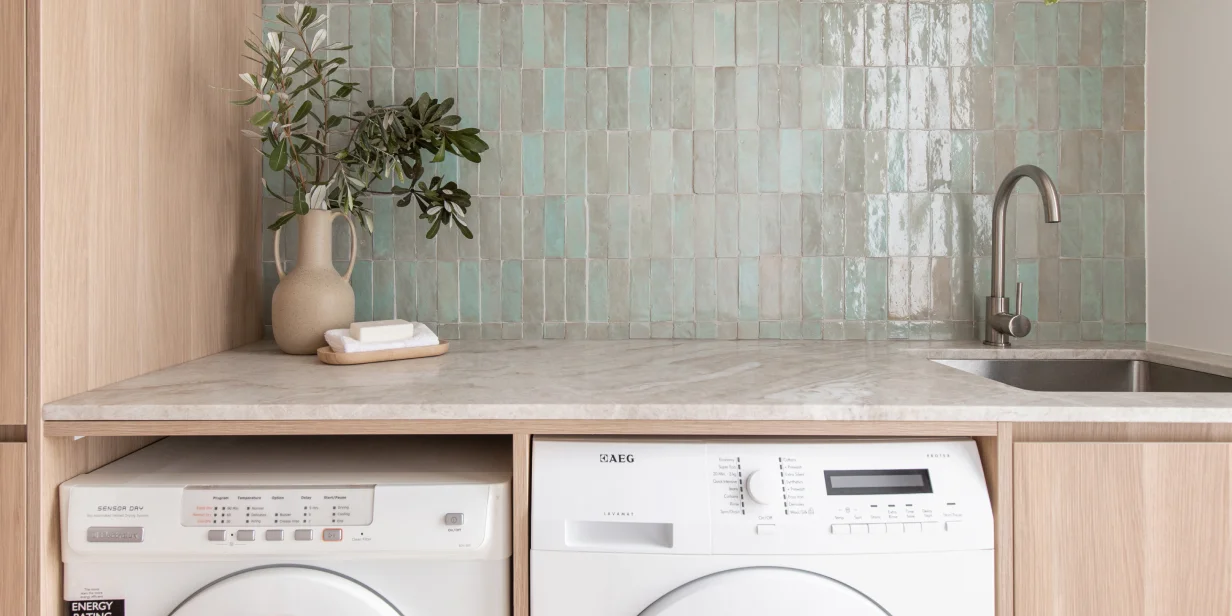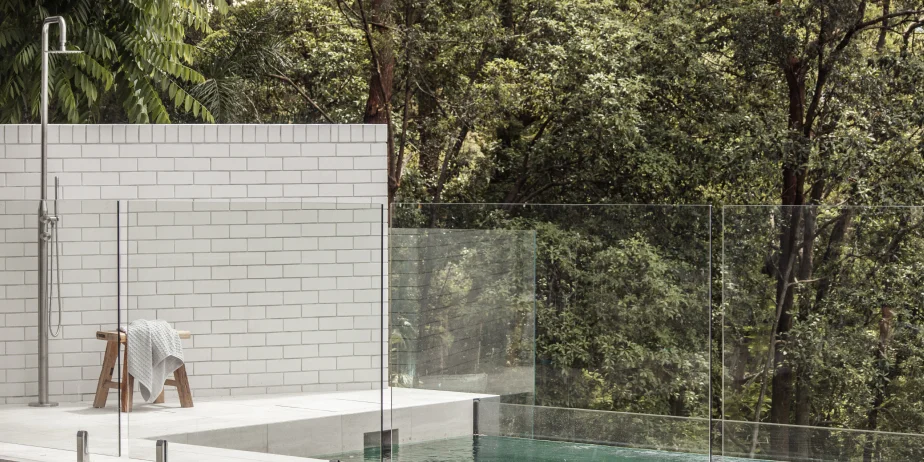Brass vs Stainless Steel Tapware: Which is the Best Choice for Your Home
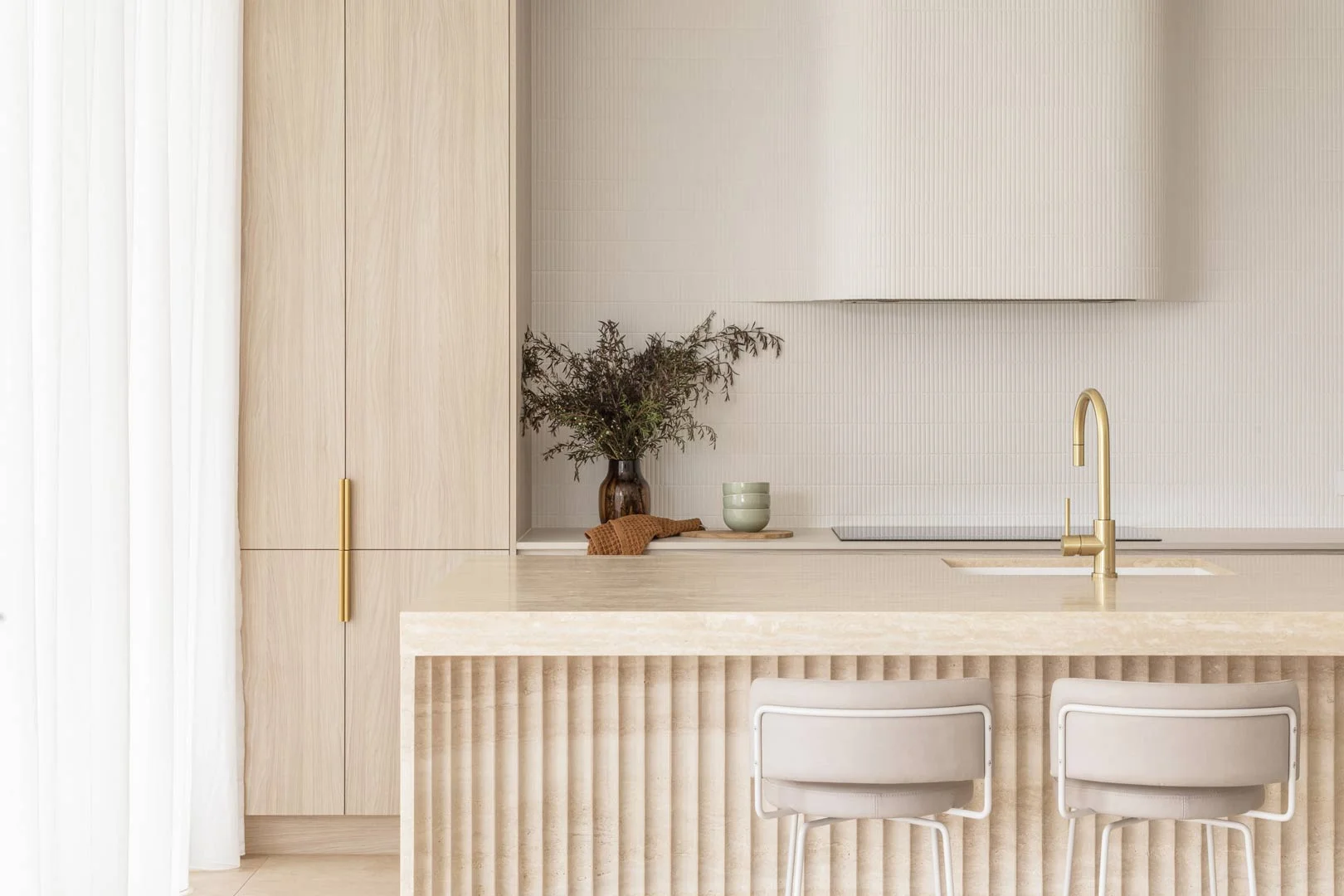
Knowing which kitchen tapware and bathroom tapware will work best in your space can be challenging. Material construction is a good place to start; therefore, balancing the pros and cons of brass vs stainless steel tapware makes sense.
We compare the two materials, highlighting their advantages and disadvantages, to determine the best tapware for bathrooms, kitchens, and other areas of the home.
What is Brass Tapware?
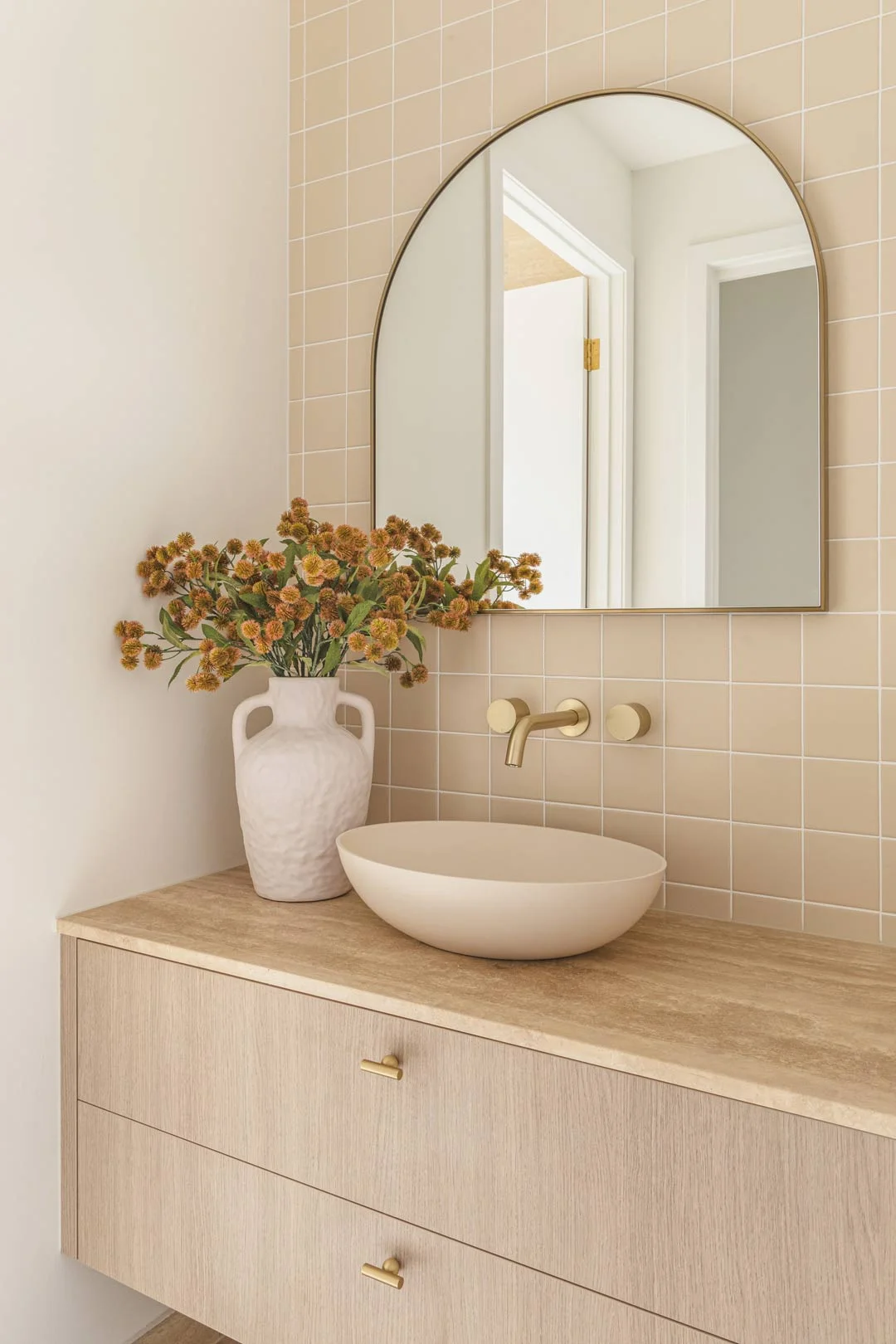
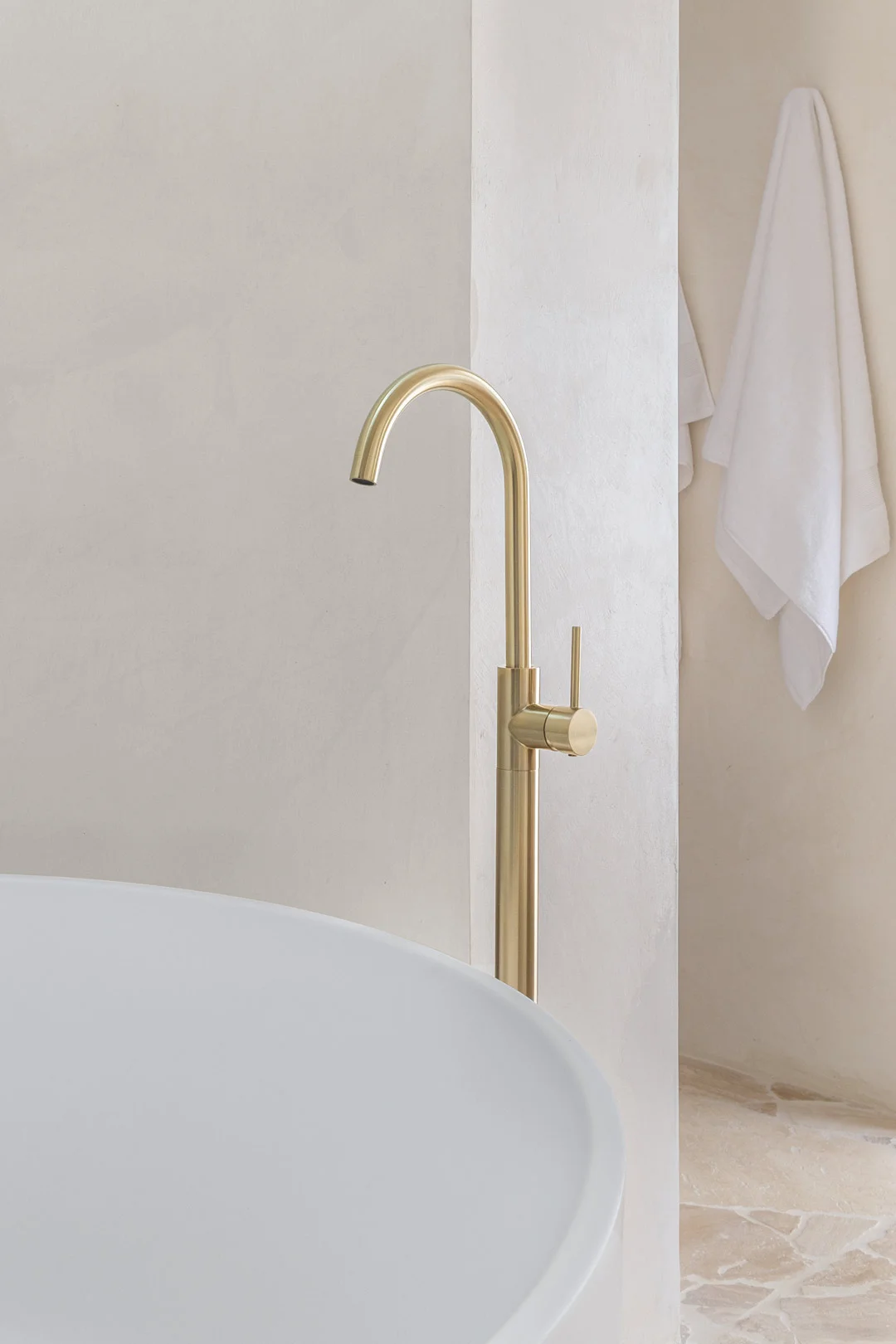
Constructed primarily from brass, brass tapware is a durable metal alloy composed of copper and zinc. Highly regarded for its strength, corrosion resistance, and antibacterial properties, brass is ideal for kitchen and bathroom applications. It’s easy to shape, making it suitable for intricate designs, and can be finished in various textures and tones. Often coated with protective layers like PVD, brass tapware offers long-lasting performance and a timeless, sophisticated appearance.
Solid brass is the primary material used throughout our range. Our solid brass alloy consists of 61% copper, 36% zinc, plus elements like phosphorus, aluminium, magnesium, and lead.
What is Stainless Steel?
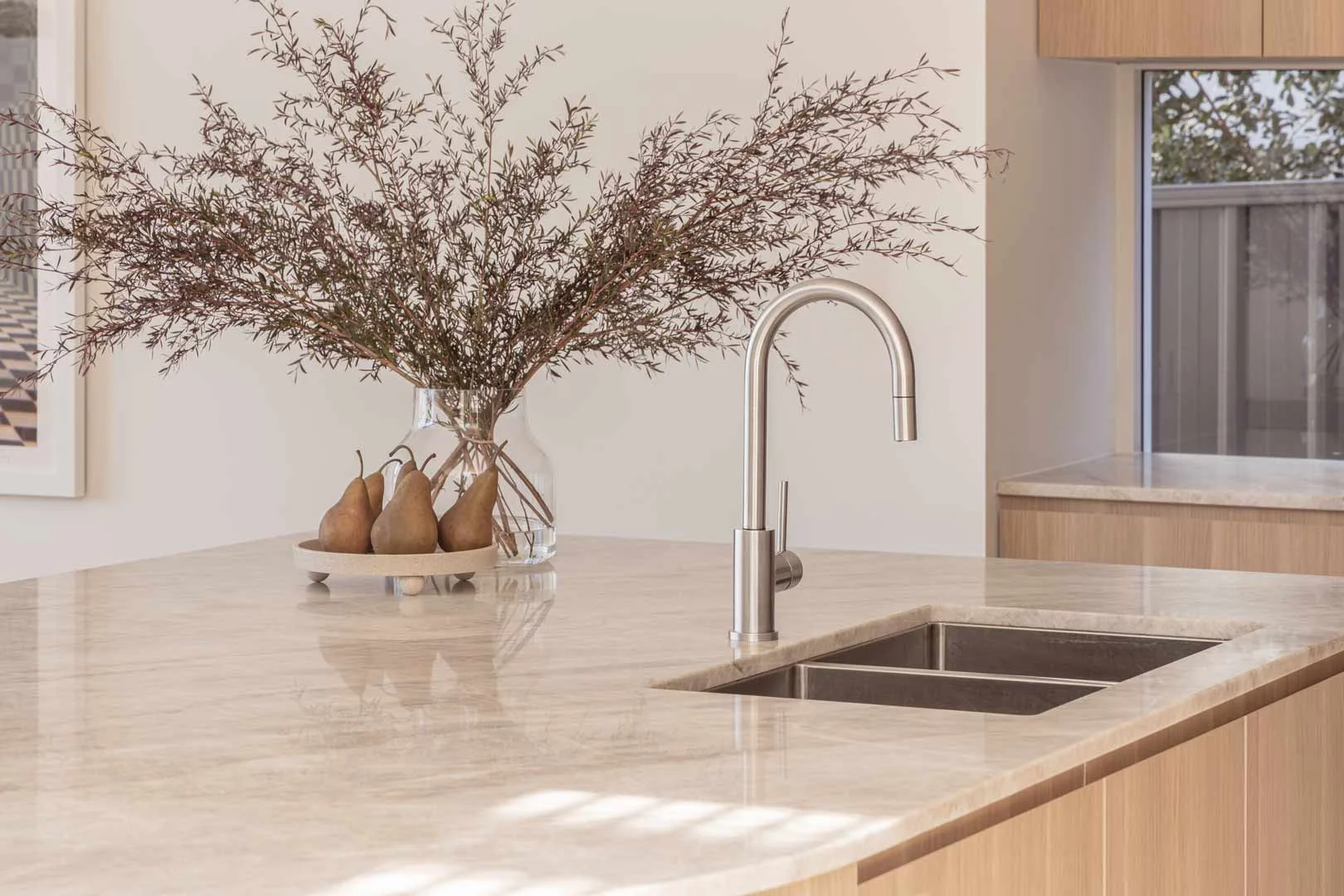
An alloy of iron and a minimum of 10% chromium, stainless steel is valued for its ability to resist rust and corrosion. The chromium reacts with oxygen, forming a protective oxide layer that prevents rust and staining. Often combined with elements like nickel or molybdenum, stainless steel is durable, heat-resistant, and ideal for kitchens, bathrooms, and outdoor fixtures. High-grade variants, such as 304 and 316 stainless steel, are especially valued in premium tapware for their strength, longevity, and superior resistance to rust and corrosion.
Engineered for resilience, ABI Interiors’ stainless steel range combines superior corrosion resistance with high strength, ensuring lasting performance even in harsh conditions.
Suiting various applications and conditions, we offer products in 304 and 316 grades of stainless steel.
304 Stainless Steel
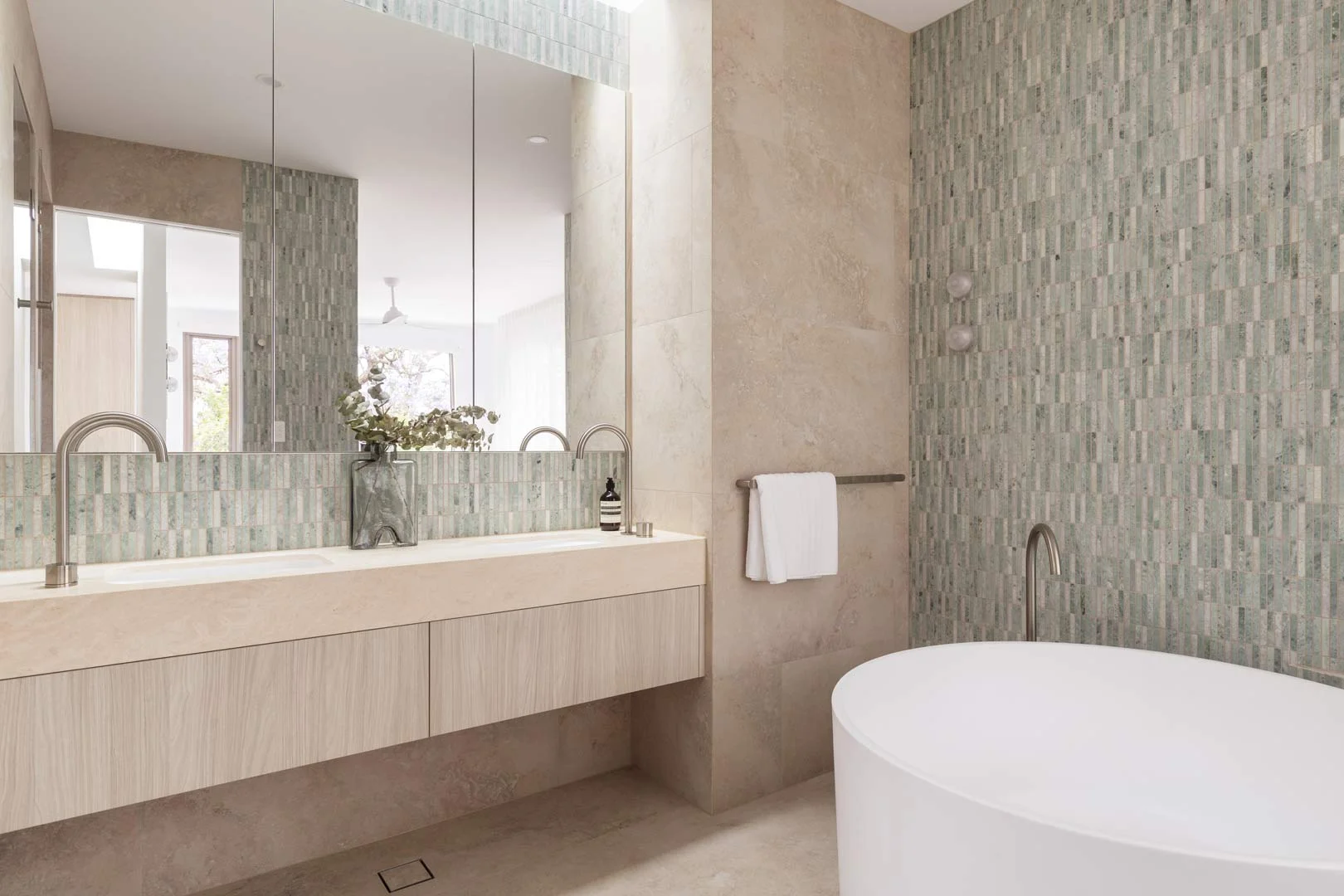
Blending strength with style, 304 stainless steel is more robust than brass and well-suited for modern interiors or busy commercial spaces. It contains high levels of nickel and chromium, which contribute to its strength and corrosion resistance, along with other key alloying elements such as manganese, silicon, carbon, and iron.
316 Stainless Steel
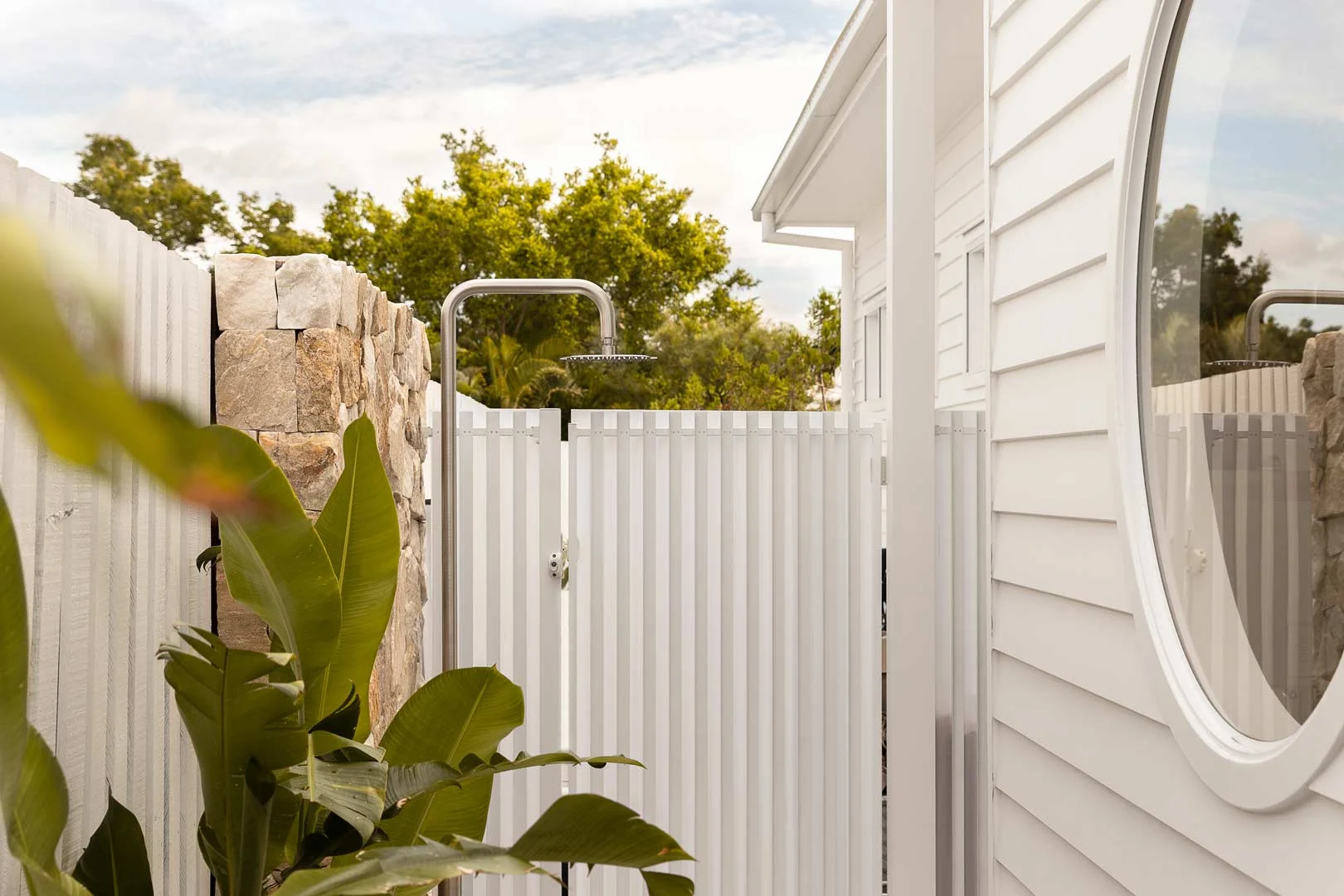
ABI’s outdoor range features 316-grade stainless steel — a material known for its superior resistance to corrosion from salt, moisture, and harsh weather. Commonly used in marine settings, it’s ideal for coastal New Zealand homes where durability really matters. While it shares a similar composition with 304 stainless steel, the key difference is the addition of molybdenum, which provides superior corrosion resistance, making it ideal for harsh, chloride-rich environments.
Brass vs Stainless Steel Tapware: Pros and Cons
Brass Tapware
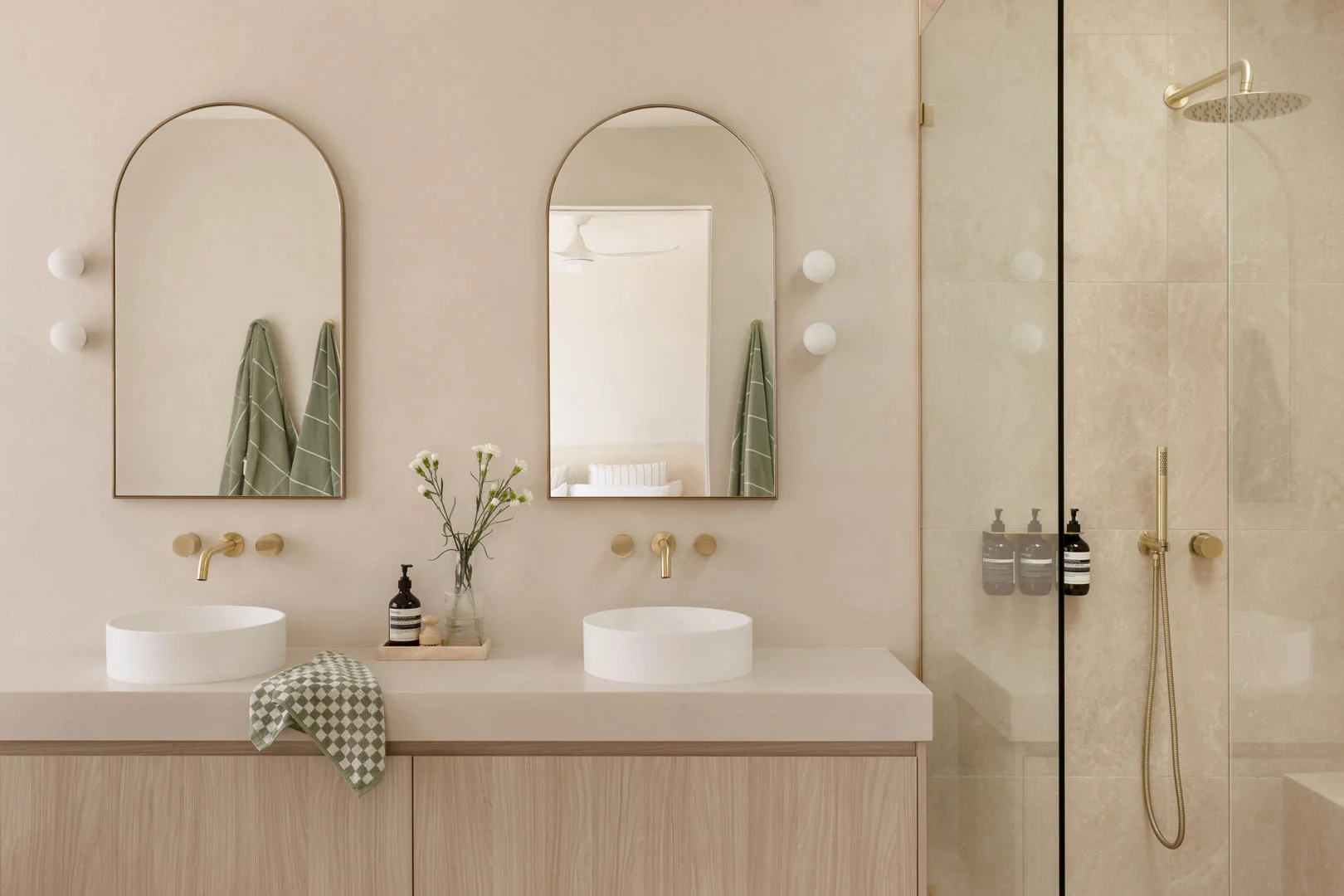
| Pros | Cons |
| Raw, unlacquered brass can develop a patina over time, creating a vintage aesthetic | Contains trace amounts of lead (unless specifically stated as lead-free) |
| Heavier, giving a premium, substantial feel | Heavier than stainless steel, which could affect specific installations |
| Naturally antibacterial properties | More prone to corrosion in coastal or high-humidity environments |
| Durable and long-lasting | Requires more maintenance to preserve appearance over time |
| Available in a wide variety of finishes |
Stainless Steel Tapware
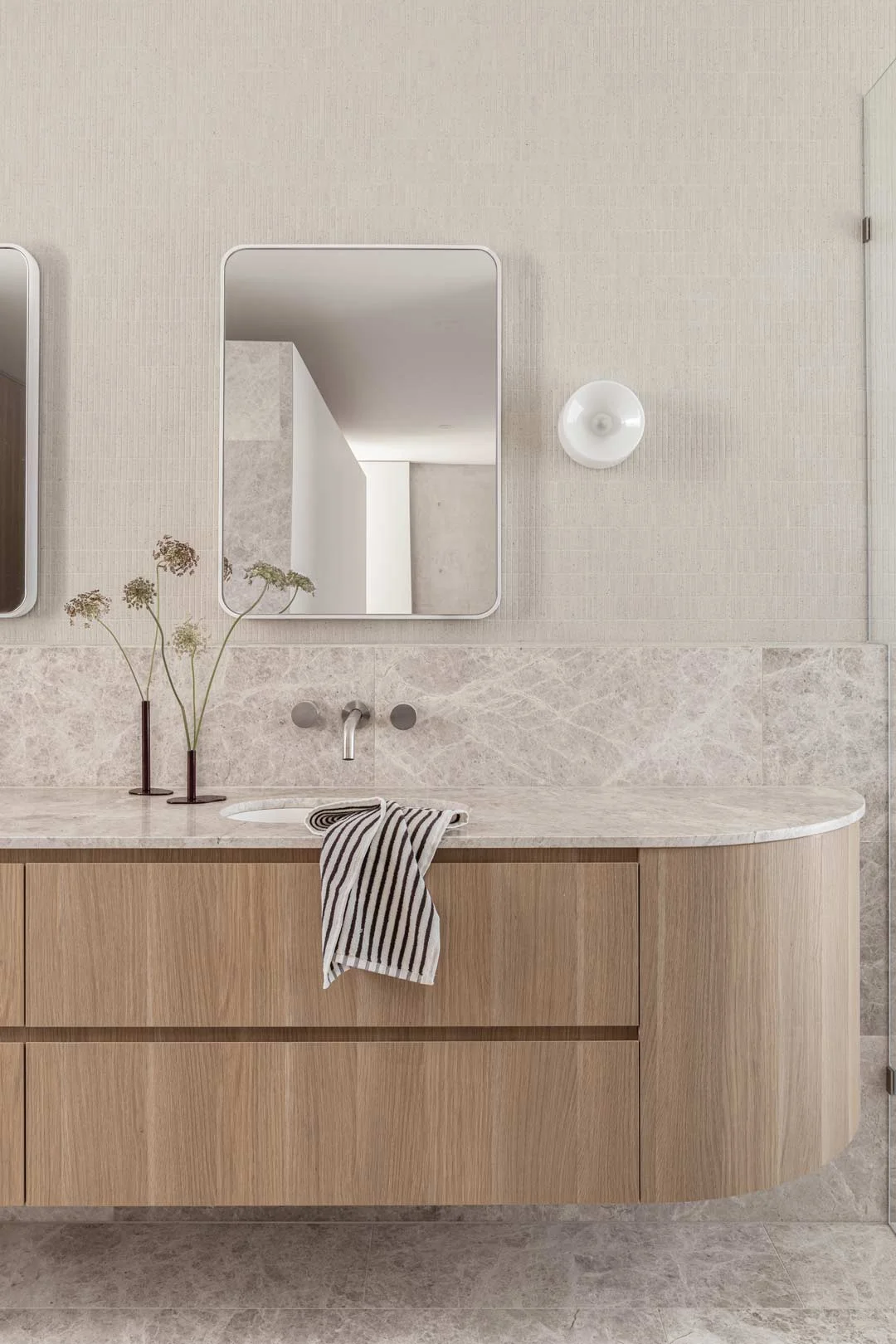
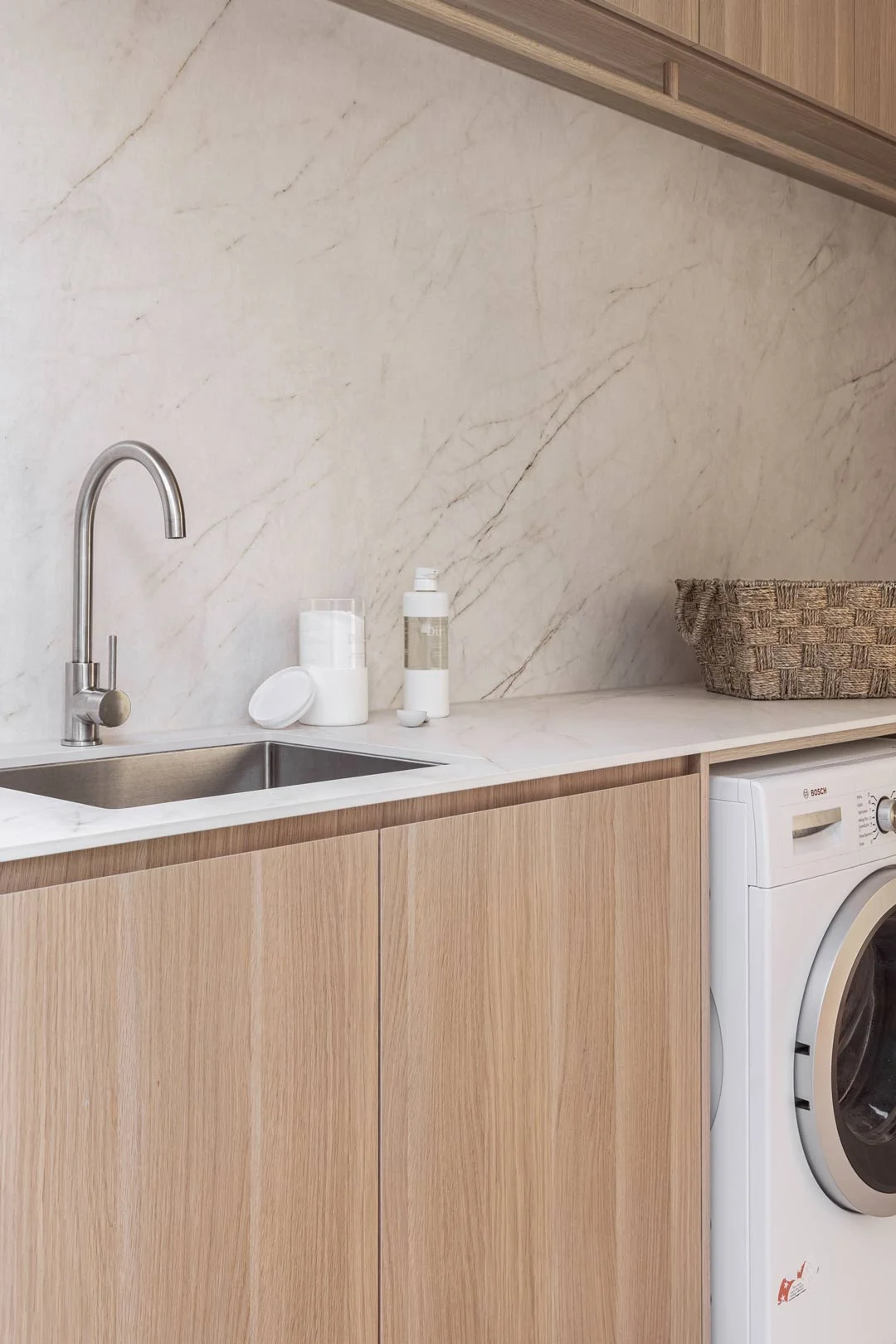
| Pros | Cons |
| 100% lead-free | Can appear clinical or industrial in certain interiors |
| Eco-friendly and infinitely recyclable | May show fingerprints, water spots, or scratches if not properly maintained |
| Exceptional durability for both internal and exterior environments | |
| Highly resistant to corrosion, ideal for coastal areas | |
| Rust-resistant and hygienic | |
| Lightweight | |
| Low maintenance with a modern appearance | |
| Suits a broad variety of interior design styles |
Brass vs Stainless Steel Tapware: Which is Right for You?
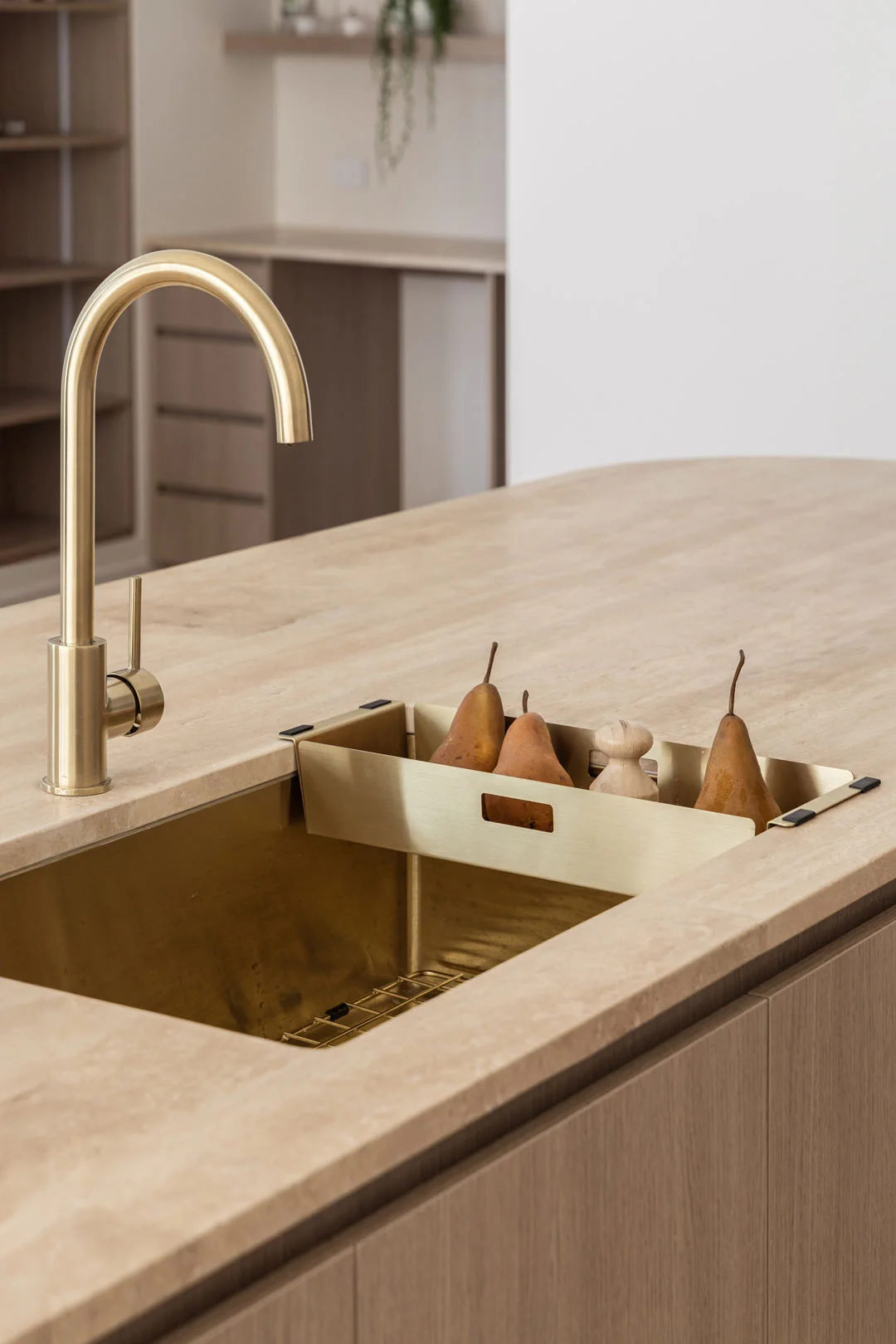
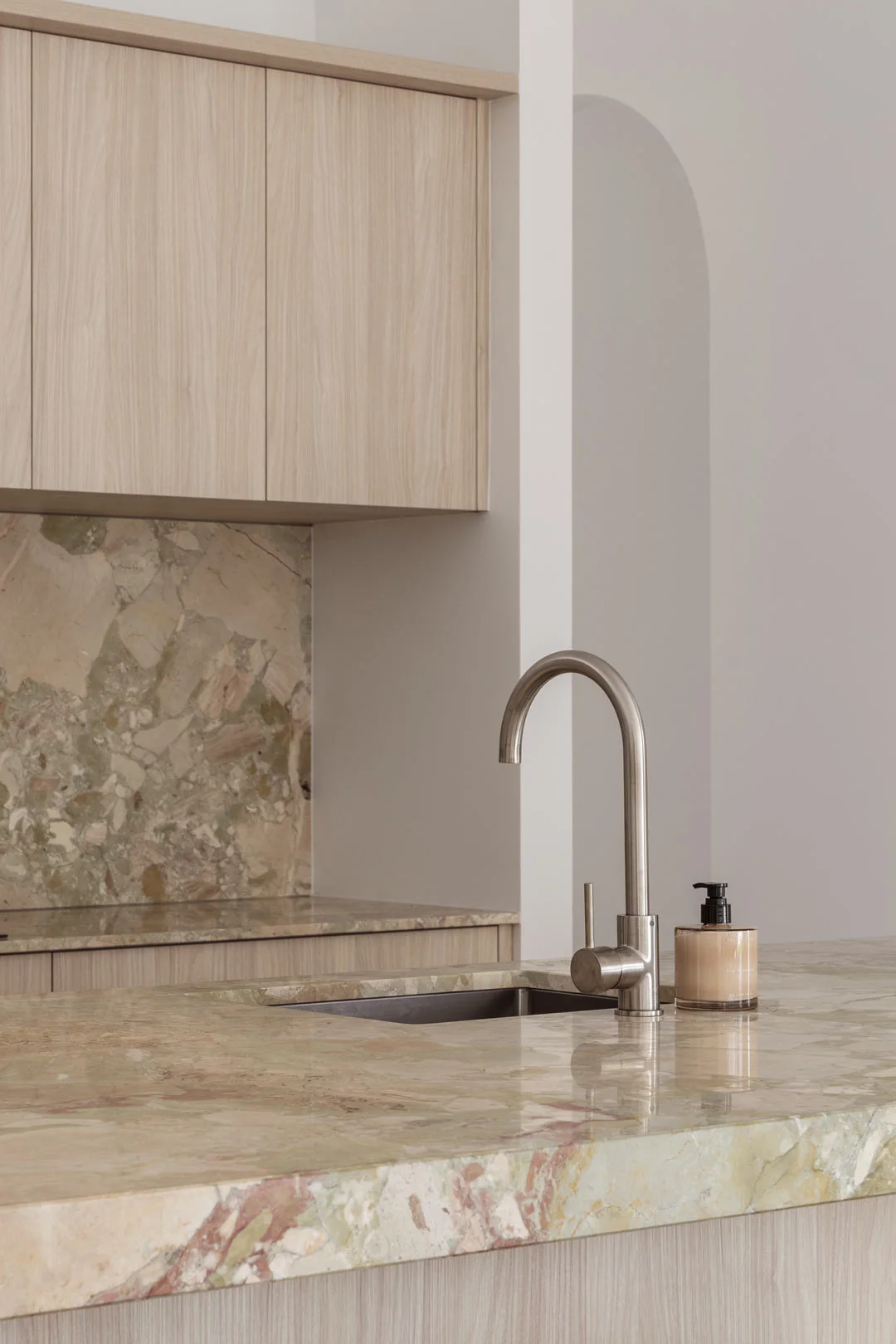
Navigating the pros and cons of brass and stainless steel tapware can quickly become overwhelming. Each material has various advantages that can suit your circumstances — it all depends on your space, budget, lifestyle, and any environmental or health concerns you may have.
Specifically, unlacquered brass tapware is a natural fit for traditional or vintage-style spaces, offering a warm, timeless appeal that only deepens as its patina develops over time. White tapware may require more specific maintenance to preserve its unique finish, particularly in humid or coastal areas, but it is highly durable and offers a premium feel. However, as mentioned, brass tapware can contain traces of lead, so it’s essential to be aware of the potential long-term health risks.
Alternatively, stainless steel delivers a crisp, modern finish and is well-known for its toughness, corrosion resistance, and minimal maintenance requirements. It’s an excellent choice for modern and minimalist spaces, providing a timeless appearance compatible with a wide variety of interior design styles. Due to its superior durability and resistance to tarnishing, stainless steel is particularly well-suited to humid or coastal environments. As it’s lead-free and non-reactive, it also presents no known health risks, making it a safe and practical option for tapware.
The Best of Brass vs Stainless Steel Tapware
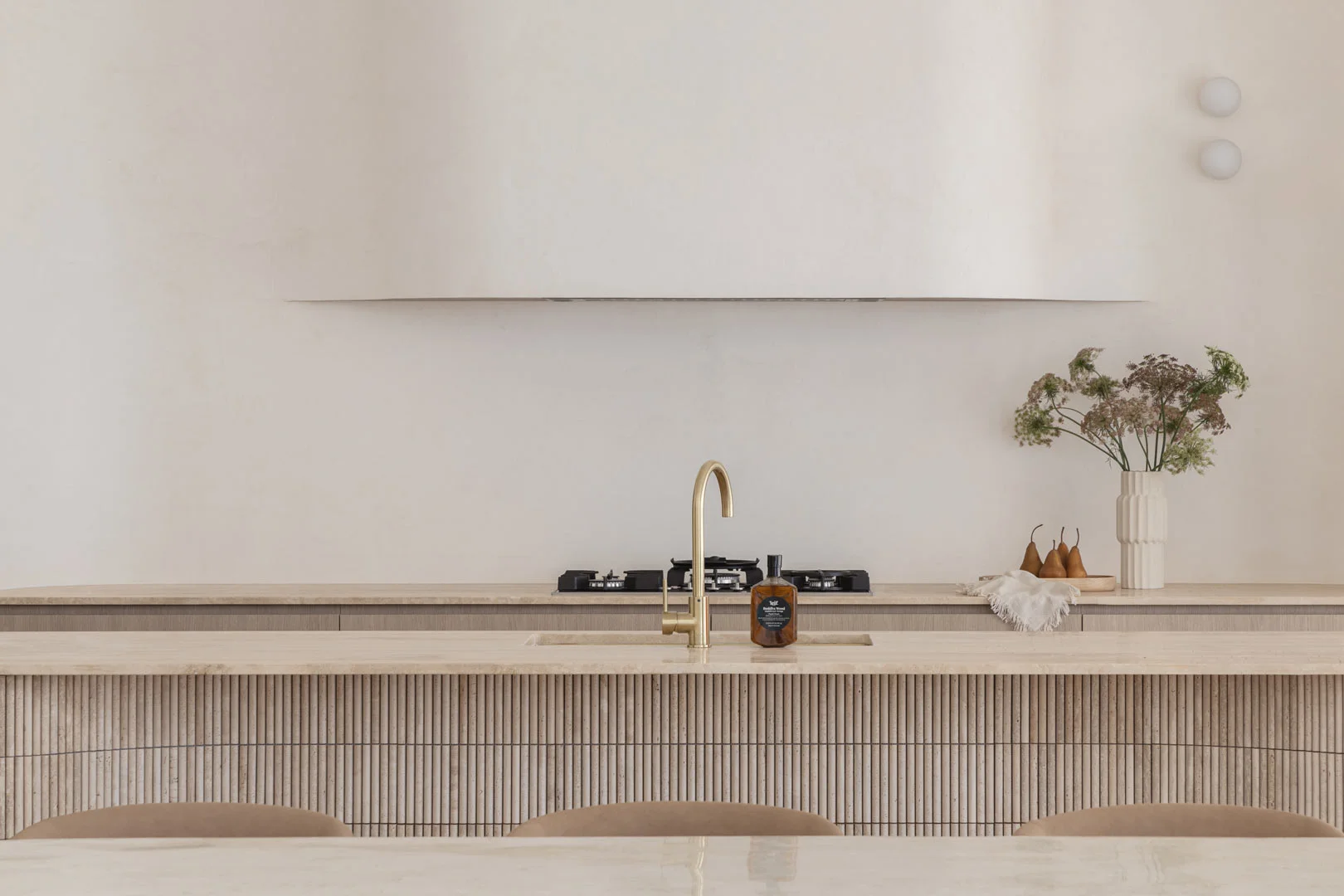
ABI Interiors provides extensive tapware crafted from solid brass or stainless steel tapware. This includes 304 and 316 stainless steel options, such as our Elysian Commercial Pull-Out Kitchen Mixer and our Sola Minimal Mixer, available in up to six finishes, including our signature brushed brass. This combination offers the superior durability of stainless steel with the refined aesthetic of brass.
Our antique brass tapware is another range crafted from solid brass. It naturally patinas over time and features a distinctive living finish.
For peace of mind, also check out our entire lead-free tapware range.
Also, read our blogs:
Bathroom Vanity vs Cabinet: Which is Right For You?
Tiles vs Floorboards: Which is Best for Your Home?
The Future of Smart Homes: What Sci-Fi Movies Predicted vs. What’s Now Possible
